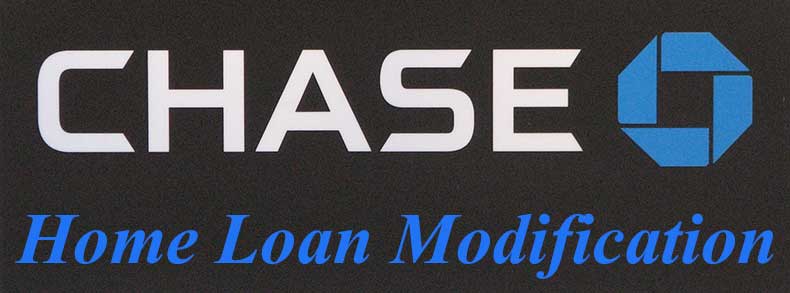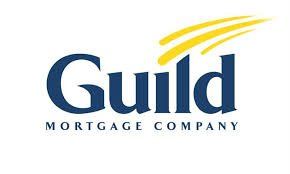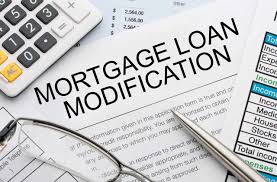Home Retention Inc
We Save Homes
The Nation’s Most Trusted Non-Government Resource for Honest, Affordable Loan Modification Information
HOMERETENTION.ORG
Home Of The Do It Yourself Loan Modification
💬 Tired of waiting on empty promises?
At HomeRetention.org, we don’t sell overpriced loan mod “services” or charge you upfront for false hope.
Instead, we sell what most companies won’t: the actual information, tools, and strategy you need to request a loan modification on your own—legally, confidently, and affordably.
We’re not affiliated with the government or your lender, and that’s a good thing.
Because you’re not hiring us—you’re learning from us. We provide the blueprint. You take the lead.
“Our clients are homeowners taking charge of their finances and looking for expert solutions to stay in their homes and protect their legacy.”

Our clients don’t give up. They fight for their homes, their credit, and their families — and we them fight by showing them how to do it.
Don’t let foreclosure take everything. Let’s fight smarter.
🛡 #HomeRetention #ForeclosureHelp
Helping homeowners keep their homes, protect credit & fight foreclosure — with real results. 🛑🏠 #KeepYourKeys
“When the banks say no,
we say fight.”

HomeRetention.Org
Do It Yourself Home loan Modification
Part 1 to 6
Avoid These Mistakes On Your Home Loan Modification Request
If you want to handle the loan modification process yourself, you have to know what to do, but more importantly, what not to do!
Let’s look at a few things you should never do when preparing your loan modification application.
This is important information if you want to increase your chances of getting your loan modification approved.
Homeowners may not realize that they do have some control over whether their loan workout is granted.
Learn More Below
Avoid These Mistakes
By making sure that your loan modification forms are completed properly and have the best chance of meeting your lender's approval guidelines.
The fact is that your bank will base their decision mainly on what they see on your loan modification application paperwork, so make sure you avoid these mistakes that could cost you an approval.
Mistake #1:
Not telling the truth, the whole truth and nothing but the truth when applying for mortgage loan modification.
There’s a big chance you will get caught, which will result in you losing any chance whatsoever of being accepted for a mortgage loan modification.
Incomplete, inaccurate or missing information can be a real problem.
Your lender WILL check up on the facts you provide with your mortgage loan modification application, so don’t even try to tell a white lie or omit information.
Did you know that your bank will run your credit, review your bank statements and then compare this information against the information you provided on your loan modification forms?
Any missing or inaccurate information could cause your application to be delayed and even denied!
You can avoid this mistake by making sure you disclose all of your debts, obligations and income accurately.
Mistake #2:
Not completing your financial statements so that they prove in black and white that you cannot afford the current payment, but will in fact be able to afford and maintain your new modified mortgage payment.
The biggest reason for a borrower not getting the loan modification they need is not proving to their lender that they will not be a risk for re-default after the loan workout.
You must assure your bank that you will be able to pay the new modified Target payment.
How can you do this? You can prove this clearly and decisively when you use accurate financial statements and follow the detailed directions provided for completing those forms.
Mistake #3 :
Not writing a convincing and acceptable Hardship Letter that really lets your lender know your circumstances, why you are facing financial hardship, and your commitment to continued homeownership as a top priority.
This is your chance to gain your banks empathy, and give them the justification they need to approve your loan modification application.
You can get help to write your own perfect letter here:
How To Write A Hardship Letter and you can use some of the sample hardship letters provided here at
http://www.homeretention.org/Loan-Modification-Resources--Forms--Files--Links.html
Mistake #4:
Not doing proper preparation for a mortgage loan modification.
If you don’t take the time to study the mortgage modification process, save yourself the hassle of sending in the paperwork.
There’s an enormous chance you’ll get declined, because you haven’t prepared properly and you'll end up trying to piece together a loan workout that doesn’t meet the approval criteria and guidelines of your lender.
This shows the lender that you did not take the time to go through the paperwork and you did not read up on the approval criteria and guidelines.
This is one of the quickest ways to get your application denied, so take the time to read up on your lenders loan modification approval guidelines before you prepare and submit your forms.
When you do not know what your bank needs to see in order to approve your loan workout, you’re just taking a shot in the dark! Not very smart when your home is on the line.
Again, you need to make the effort to learn what your bank is looking for to approve your loan modification application, then prepare your forms so that they have the best chance of meeting those approval guidelines.
Once you know what your target payment is, and that it meets those guidelines, you will have the edge you need to help get your loan modification approved.
Learn about lender guidelines and how to determine your target payment here at http://www.homeretention.org/Loan-Modification-Resources--Forms--Files--Links.html
Mistake #5:
Trying to negotiate with the wrong person.
You may get called at home by someone from the collections department about your unpaid mortgage bills.
Don’t bother trying to talk with them about mortgage loan modification.
These people are unable to help you and are just calling to get the money.
You’re better off contacting the correct department of your lender, so you can speak with someone that can actually help you out.
Mistake #6:
Paying a mortgage loan modification company a big upfront fee.
There are a lot of mortgage loan modification companies springing up left and right because of the high number of foreclosures.
They all want to get a piece of the pie. Be sure you check their credentials and know that you’re dealing with an ethical, reputable company before giving them your money.
The objective is to get out of the hole, not deeper in it.
Either way, be warned that paying to have a loan modification company do your modification application for you does not guarantee success.
And, there are many unscrupulous characters moving in to this space.
The Department of Housing and Urban Development (HUD) urges extreme caution if you choose a company to represent you in the modification process.
Now that you know what NOT do, you can learn what to do by learning and preparing ahead of time.
Your application will look good to a lender if you don’t make the mistakes we’ve outlined here.
You can learn the basics of a successful mortgage loan modification in a couple of hours so you can greatly increase your chance of getting the help you need.
The final decision is up to the lender, but taking the time to do your mortgage loan modification right greatly increases your chances of being accepted.
You can get the help you need to prepare your loan modification forms correctly by following the Do It Your Self Mortgage Loan Modification steps 1 through 6 that are easy to read and follow and will provide you with mostly everything you need to prepare a professional and acceptable loan modification application.
We provide some forms and tools that may aid you at http://www.homeretention.org/Loan-Modification-Resources--Forms--Files--Links.html
However your lender will provide mostly all the forms that you will need.
The Do It Yourself Mortgage Loan Modification steps 1 through 6 will take you step by step through calculating your debt ratio, completing the financial statements, writing your hardship letter and then putting it all together to submit to your lender. Get started today on the path to secure home ownership.
Home Retention.Org
One of the items your lender or servicer will ask for during the loan modification process is a hardship letter.
A hardship letter is a written explanation as to what “event” has caused you to fall behind on your mortgage and it vital in helping you stop foreclosure.
This letter acts much like an outline or biography of your current “life” issues that are affecting your ability to meet your financial obligations. Keep it short, simple and to the point.
Read more here: > How To Write A Hardship Letter
The main purpose of a loan modification hardship letter is to convince your lender that you will be able to pay your monthly mortgage payment on time in the future if they modify your loan.
The first paragraph should focus on the positive; convincing the lender that you can make the modified monthly payment.
Basically, your lender has to make a calculated decision based on your current financial and employment status to determine if you will be a good candidate for a loan modification.
While the “Hardships” that may have contributed to your unique scenario are important to include in this letter, all you're doing is briefly explaining the financial documents provided anyway.
You're humanizing the mortgage. You're forcing the underwriter to identify with your plight.
But ultimately, the underwriter or reader is concerned with converting your non-performing, imminent default to a performing asset.
We have seen many suggested hardship letter templates listed on the web. We believe that no template is a "one size fits all" solution. What happens when your underwriter reads the same letter twice (and yours is the second one)?
We believe that personalizing the hardship is much more efficient and beneficial to your application.
http://www.homeretention.org/How-to-write-a-hardship-letter.html
Surplus Guidelines Often Over Looked Very Important!
Surplus Guidelines for Loan Modifications (funds remaining after all expenses are paid)
Let me give you a little information on surplus and loan modifications. This will be short and sweet. Each lender operates a little different from one another.
Each have their own in-house policies that could be completely different from their competitors. Even though they share common ground - providing service, some of their practices are somewhat different from each other.
Given this, each lender have their own guideline for surplus. Overall, they want to see if there is enough funds remaining after all expenses are paid.
Very few will allow the surplus to be in the red to consider you for a loan modification. Most of them would like to see a percentage, again depending upon who the lender is, at the end of each month, on average, after bills are paid.
Surplus not suitable for a loan modification:
•surplus too large - lenders will look at this as you can afford your existing mortgage and will probably decline your request to modify.
•surplus too small - lenders will look at this as you cannot afford your current mortgage and will not want to invest in re-constructing your loan.
They may advise you to cut costs or find additional employment to meet their guidelines. If you are working with a firm that’s negotiating for you, they should help you create a budget and explain to you what your lender want to see.
This is a HEADS UP for you! If you’re handling your own modification with your lender, go over your budget.
Take your income and subtract it against your expenses. There should be at least $200.00 remaining after all bills are paid. If not, look to see what costs you can cut.
Poor money management is a large reason why most modifications are not approved. The lender will see through that and quickly will tell you they will not help you.
HELP US HELP OTHERS ACHIEVE SUCCESS
Support Home Retention.Org so they can continue to help, guide and provide information and consultations to help homeowners achieve their goal in getting a successful home loan modification.
Your donation goes directly to supporting HomeRetention.Org provide updated information and Consultations
Loan Modification News
& Updates
At HomeRetention.org, we don’t charge upfront fees or offer legal representation.
We provide educational tools and proven strategies to help you request a loan modification on your own—affordably, legally, and confidently.
We’re not affiliated with the government or your lender. We're a trusted resource for homeowners who want real guidance, not false promises.



















